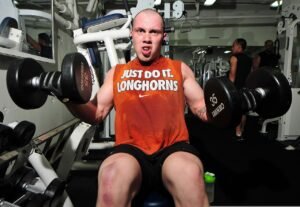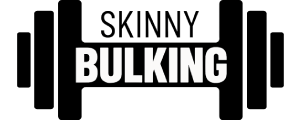Building lean muscle is a great way to improve your overall health and fitness. It can be a daunting task for beginners to navigate the world of exercise and nutrition, with so much conflicting information out there. The good news is, with the right guidance and knowledge, anyone can build lean muscle and achieve their fitness goals. In this blog post, we will provide you with a skinny beginner’s guide to building lean muscle, complete with tips and tricks to help you get started. We will cover the basics of weight training, how to eat for muscle growth, and how to create an effective workout plan. Whether you have never lifted a weight in your life, or you are a seasoned gym-goer looking to switch things up, this guide is for you. So, let’s get started on your journey to building a stronger, leaner, and healthier body with Bodyfit.
1. Understanding the basics of muscle building

Image: pixabay
Before you go all-in on your muscle-building journey, it’s important to understand the basics. Muscle building is essentially the process of breaking down your muscles through exercise and then allowing them to repair and rebuild stronger than before through proper nutrition and rest.
One of the most important factors in building muscle is progressive overload. This means gradually increasing the weight or resistance of your exercises over time to challenge your muscles and push them to adapt and grow.
In addition to resistance training, proper nutrition is crucial for building lean muscle. Eating enough protein to support muscle growth and consuming carbohydrates to fuel your workouts and replenish glycogen stores is essential.
However, it’s important to note that building muscle takes time and consistency. It’s not a quick fix or overnight transformation. It requires dedication to a balanced workout routine, proper nutrition, and adequate rest and recovery.
By understanding the basics of muscle building and committing to a consistent routine, you can start on the path to building lean muscle and achieving your fitness goals.
2. Why it’s important to build lean muscle
Building lean muscle is not just about looking good, it plays a vital role in our overall health and well-being. It’s not just about building large muscles and achieving the perfect beach body. Building lean muscle contributes to increased metabolism which helps to burn fat and build a stronger body.
Lean muscle mass also helps to improve overall strength and power, which can improve our ability to perform daily activities with ease. For example, carrying heavy grocery bags or lifting a child becomes easier when you have a strong body. Additionally, lean muscle mass helps to improve bone density, which is particularly important as we age and need to maintain the strength of our bones.
Building lean muscle also has a positive impact on mental health. Exercise releases endorphins which help to elevate mood and reduce stress levels. This not only improves our mental health but also contributes to better sleep, which in turn helps to reduce inflammation and promote recovery.
In short, building lean muscle is not just about aesthetics, it has a multitude of benefits for our overall health and well-being. So, if you are looking to improve your health and achieve a stronger, fitter body, building lean muscle should be an important part of your fitness routine.
3. The role of nutrition in building lean muscle
When it comes to building lean muscle, nutrition plays a crucial role. You can train all you want, but if you don’t fuel your body with the right nutrients, your efforts will be in vain. The basic principle of building lean muscle is that you need to be in a caloric surplus, which means that you need to consume more calories than you burn. However, not all calories are created equal.
Protein is the building block of muscle, and you need to consume enough of it to support muscle growth. Aim for 1.5 to 2 grams of protein per kilogram of body weight per day. Good sources of protein include lean meats, poultry, fish, eggs, dairy, and plant-based sources like beans, lentils, and tofu.
Carbohydrates are also essential for building lean muscle. They provide the energy you need to fuel your workouts and support muscle recovery. Choose complex carbohydrates like whole grains, fruits, and vegetables, and avoid processed and refined carbohydrates like white bread, pasta, and sugary snacks.
Healthy fats are important too, as they help your body absorb vitamins and minerals and reduce inflammation. Good sources of healthy fats include nuts, seeds, avocado, and fatty fish like salmon.
Finally, don’t forget to hydrate! Drinking enough water is crucial for muscle function and recovery. Aim for at least 2 liters of water per day, and more if you’re exercising intensely.
In summary, building lean muscle requires a combination of strength training, rest, and proper nutrition. By fueling your body with the right nutrients, you’ll be able to maximize your muscle growth and achieve your fitness goals.
4. Developing a proper strength training routine

Image: pixabay
Developing a proper strength training routine is critical to building lean muscle. This involves lifting weights and performing resistance exercises that target different muscle groups in the body. It’s important to start with lighter weights and gradually increase the weight and intensity over time.
One of the most common mistakes beginners make is not focusing on their form. It’s important to perform each exercise with proper form to avoid injury and effectively target the intended muscle group. This is where a personal trainer or experienced workout partner can be helpful in correcting form and providing guidance.
When developing a strength training routine, it’s important to focus on compound exercises that work multiple muscle groups at once, such as squats, deadlifts, bench press, and pull-ups. These exercises are essential for building overall strength and mass.
It’s also important to incorporate a variety of exercises to ensure all muscle groups are being targeted. This can include different variations of exercises, such as wide-grip pull-ups or incline bench press, to target different areas of the muscle group.
Finally, it’s important to give your muscles time to rest and recover between workouts. This allows the muscle fibers to repair and grow stronger, leading to lean muscle gains. Aim to incorporate strength training 2-3 times per week, and alternate the muscle groups being targeted each session to give each group time to rest and recover.
5. The importance of rest and recovery
Rest and recovery is an important aspect of building lean muscle. When you workout, your muscles experience micro-tears, and during rest periods, your body repairs those tears, resulting in muscle growth. Therefore, it is crucial to give your body enough time to recover and rest after a workout.
Rest and recovery can be achieved in several ways. One of the most important aspects is getting enough sleep. During sleep, your body releases growth hormones that help in muscle repair and recovery. You should aim to get at least seven to eight hours of sleep each night to help your muscles recover and grow.
In addition to sleep, you can also incorporate active recovery techniques such as stretching, yoga, or low-intensity cardio. These activities help to increase blood flow to your muscles, which aids in the repair process. Active recovery also helps to reduce soreness, stiffness, and fatigue.
Finally, nutrition plays a significant role in rest and recovery. Consuming a balanced diet with adequate amounts of protein, carbohydrates, and healthy fats is essential for muscle repair and growth. You should aim to consume protein-rich foods within 30 minutes to an hour after a workout to help kickstart the recovery process.
In conclusion, rest and recovery are critical components of building lean muscle. By incorporating active recovery, getting enough sleep, and consuming a healthy diet, you can give your muscles the time and resources they need to repair and grow, leading to a stronger, leaner physique.
6. Maximizing your workouts with proper form
Maximizing your workouts with proper form is essential to building lean muscle. Using proper form during strength training exercises not only reduces the risk of injury but also helps to target the muscles you’re trying to work on.
When lifting weights, it’s important to focus on the quality of the movement rather than the quantity of weight lifted. Start with a weight that’s comfortable for you and gradually increase the weight as you become more comfortable with the exercise.
It’s important to remember that using proper form during exercises can make a huge difference in the effectiveness of your workout. Take the time to learn the proper form for each exercise and make sure you’re executing the movement correctly. This can be achieved by working with a personal trainer, watching instructional videos, or studying proper form guidelines.
Incorporating compound exercises, which work multiple muscle groups at the same time, can also help maximize your workouts. Examples of compound exercises include squats, deadlifts, and bench presses. These exercises not only help to build lean muscle but also increase overall strength and endurance.
By focusing on proper form and incorporating compound exercises, you can maximize the effectiveness of your workouts and target specific muscle groups for building lean muscle.
7. The benefits of bodyweight exercises
Bodyweight exercises are an excellent way to build lean muscle, and they come with a range of benefits. Firstly, they’re free – you don’t need to pay for a gym membership or any equipment. You can do bodyweight exercises anywhere, anytime, which makes them perfect for those who have busy lifestyles or who travel frequently.
Secondly, bodyweight exercises can be modified to suit any fitness level, from beginners to advanced athletes. If you’re just starting out, you can start by doing basic exercises like push-ups, squats, and lunges. As you progress, you can add more challenging variations, such as one-legged squats or handstand push-ups.
Thirdly, bodyweight exercises are great for improving your overall fitness and athleticism. They not only help you build lean muscle, but they also improve your balance, coordination, and flexibility. This can have a positive impact on your everyday life, making it easier to carry groceries, climb stairs, or play with your kids.
Finally, bodyweight exercises are a low-impact form of exercise, which means they’re gentle on your joints. This makes them a great option for those who may be recovering from an injury or who have joint pain.
Overall, incorporating bodyweight exercises into your fitness routine is a great way to build lean muscle, improve your overall fitness, and enhance your quality of life. Plus, they’re convenient, free, and accessible to anyone, anywhere.
8. The role of supplements in building lean muscle
Supplements can be a useful tool in building lean muscle, but it’s important to understand that they are not a miracle solution. Supplements should always be used in conjunction with a proper diet and exercise routine.
When it comes to building lean muscle, protein is key. Protein supplements such as whey protein can be a convenient and effective way to ensure you’re getting enough protein in your diet. They can also be useful for those who struggle to consume enough protein through food alone.
Creatine is another supplement that has been shown to aid in muscle growth and can be particularly useful for those who are looking to increase their strength as well as their muscle mass.
However, it’s important to note that not all supplements are created equal. It’s important to do your research and choose supplements from reputable brands that have been tested for quality and safety.
Additionally, supplements should never be used as a replacement for a healthy diet. It’s important to focus on getting all the necessary nutrients from whole foods first and then supplementing where needed.
In summary, while supplements can be a useful tool in building lean muscle, they should always be used in conjunction with a proper diet and exercise routine, and chosen from reputable brands that have been tested for quality and safety.
9. How to track progress and set achievable goals

Image: pixabay
Tracking progress and setting achievable goals is essential in building lean muscle. Without these, it’s hard to see progress and stay motivated. There are a few ways to track progress, and it’s important to find what works best for you.
One way to track progress is to take progress pictures. This could be done every two weeks or once a month. Take pictures from the front, side, and back and compare them to the previous ones. You may not see a difference day to day, but over time, you’ll see how your body has changed.
Another way to track progress is to keep a workout log. Write down the exercises you do, how many reps and sets you do, and the weight you lift. This helps you keep track of how much weight you’re lifting and how many reps and sets you can do. It’s also a great way to see how far you’ve come since you started.
Setting achievable goals is also important. Start with small goals, and once they’re achieved, set new ones. For example, aim to increase the weight you lift by 5-10 pounds in a week or two. Or, aim to do one more rep or set than the week before. These small goals help you stay motivated and see progress. As you achieve these small goals, set bigger ones, like running a 5k or lifting twice your body weight.
Tracking progress and setting achievable goals are important in building lean muscle. Use these tips to help you stay motivated and see progress over time.
10. Staying motivated and consistent in your muscle-building journey.
Staying motivated and consistent in your muscle-building journey can be challenging but is crucial in achieving your desired results. The first step is to set achievable goals and have a clear vision of what you want to achieve. This will help you stay focused and motivated throughout the process.
It’s also important to track your progress, whether it’s through tracking your workouts or taking progress pictures. Seeing the progress you’ve made, no matter how small, can be a huge motivator to keep going.
Another way to stay motivated is to mix up your workouts and try new exercises or routines. This not only keeps things interesting but also helps prevent hitting a plateau in your progress.
Consistency is key in building lean muscle, and this means sticking to a regular workout routine and maintaining a healthy diet. It’s important to make exercise and healthy eating a habit, rather than a chore.
Having a workout buddy or joining a fitness community can also help keep you motivated and consistent. Surrounding yourself with like-minded individuals who share the same goals can be a great source of support and encouragement.
Remember, building lean muscle takes time and effort, but staying motivated and consistent will help you achieve your goals and maintain a healthy lifestyle in the long run.







Leave a Reply